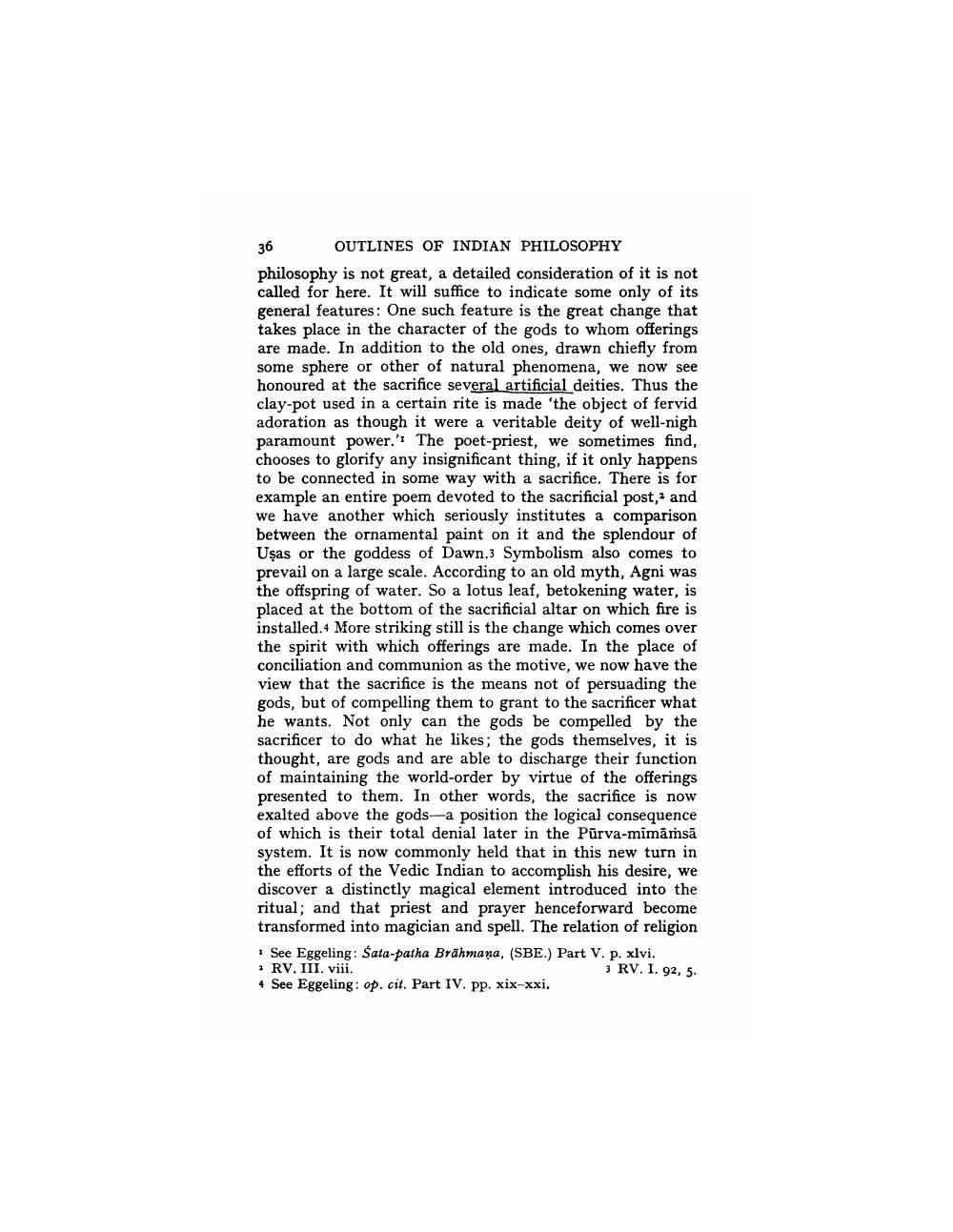________________
36 OUTLINES OF INDIAN PHILOSOPHY philosophy is not great, a detailed consideration of it is not called for here. It will suffice to indicate some only of its general features: One such feature is the great change that takes place in the character of the gods to whom offerings are made. In addition to the old ones, drawn chiefly from some sphere or other of natural phenomena, we now see honoured at the sacrifice several artificial deities. Thus the clay-pot used in a certain rite is made 'the object of fervid adoration as though it were a veritable deity of well-nigh paramount power.' The poet-priest, we sometimes find, chooses to glorify any insignificant thing, if it only happens to be connected in some way with a sacrifice. There is for example an entire poem devoted to the sacrificial post, and we have another which seriously institutes a comparison between the ornamental paint on it and the splendour of Uşas or the goddess of Dawn.3 Symbolism also comes to prevail on a large scale. According to an old myth, Agni was the offspring of water. So a lotus leaf, betokening water, is placed at the bottom of the sacrificial altar on which fire is installed. More striking still is the change which comes over the spirit with which offerings are made. In the place of conciliation and communion as the motive. we now have the view that the sacrifice is the means not of persuading the gods, but of compelling them to grant to the sacrificer what he wants. Not only can the gods be compelled by the sacrificer to do what he likes; the gods themselves, it is thought, are gods and are able to discharge their function of maintaining the world-order by virtue of the offerings presented to them. In other words, the sacrifice is now exalted above the gods-a position the logical consequence of which is their total denial later in the Pūrva-mimāṁsā system. It is now commonly held that in this new turn in the efforts of the Vedic Indian to accomplish his desire, we discover a distinctly magical element introduced into the ritual; and that priest and prayer henceforward become transformed into magician and spell. The relation of religion
See Eggeling: Šata-patha Brāhmana, (SBE.) Part V. p. xlvi. * RV. III. viii.
3RV. I. 92, 5. 4 See Eggeling: op. cit. Part IV. pp. xix-xxi.




